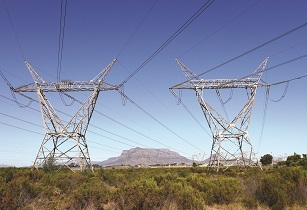With southern Africa experiencing a serious power deficit which is taking its toll on economic productivity, multiple initiatives are underway to alleviate the crisis
The Democratic Republic of Congo (DRC) is seen as a country with massive hydroelectric power potential to mitigate the crisis currently experienced in multiple countries in southern Africa.
The Zambian-based Copperbelt Energy Corporation (CEC) has significantly invested in the construction of a second power interconnector line to DRC that will increase transmission capacity from 260MW to 550MW to address electricity challenges in Zambia and the sub region.
CEC had been running the Zambian portion of the Zambia-DRC interconnector (which has been operational since the 1950s) to supply and distribute power to the mines on the Copperbelt. “CEC has invested US$18mn to develop a second double-circuit line so as to increase the carrying capacity. In addition, the second line will allow a flexible maintenance while helping to address the limitations and risks inherent in single circuits,” the company said when initially announcing the investment.
African countries should go into partnerships whenever undertaking power projects in order to adopt sustainable solutions and speed up implementation processes. Zambia is on the right path as it has already embraced the concept of integration as evidenced by the estimated US$5bn Batoka hydro power project, which is being undertaken in conjunction with Zimbabwe, while other projects in the North of the country are being considered in partnership with DRC.
Construction of the 2,400MW Batoka Gorge Hydro Electric Scheme, which is located downstream of Victoria Falls and upstream of the existing Kariba Dam hydroelectric scheme on the Zambezi River, is underway.
Zambia and Zimbabwe are expected to benefit from this trailblazing transnational project which has the potential to make both countries the net exporters of power across the Southern African Development Community (SADC) region.
Meanwhile, the US$110mn Kafue-Muzuma-Victoria Falls region transmission line reinforcement project is aimed at improving the reliability of ZESCO’s regional power trade transmission network infrastructure along the Kafue town-Muzuma-Victoria Falls corridor. The project was funded by the World Bank’s International Development Association (IDA), Government of the Republic of Zambia (GRZ) and other donors. According to a World Bank report, the development will help create an alternative transmission route that will enable power to flow between the northern and southern countries of the Southern African Power Pool (SAPP). SAPP member countries include Angola, Botswana, DRC, Lesotho, Mozambique, Malawi, Namibia, South Africa, Swaziland, Tanzania, Zambia and Zimbabwe.
“This project will further enhance power trade both through bilateral contracts and in the short-term increase energy market in the pool, and overall security of supply in the SAPP. However, this development would be an interim solution to the problem. A more permanent solution based on the SAPP pool plan study needs to be put in place in the medium to long-term,” the report stated.
Read the full article by Nawa Mutumweno in the June issue of African Review here.





















